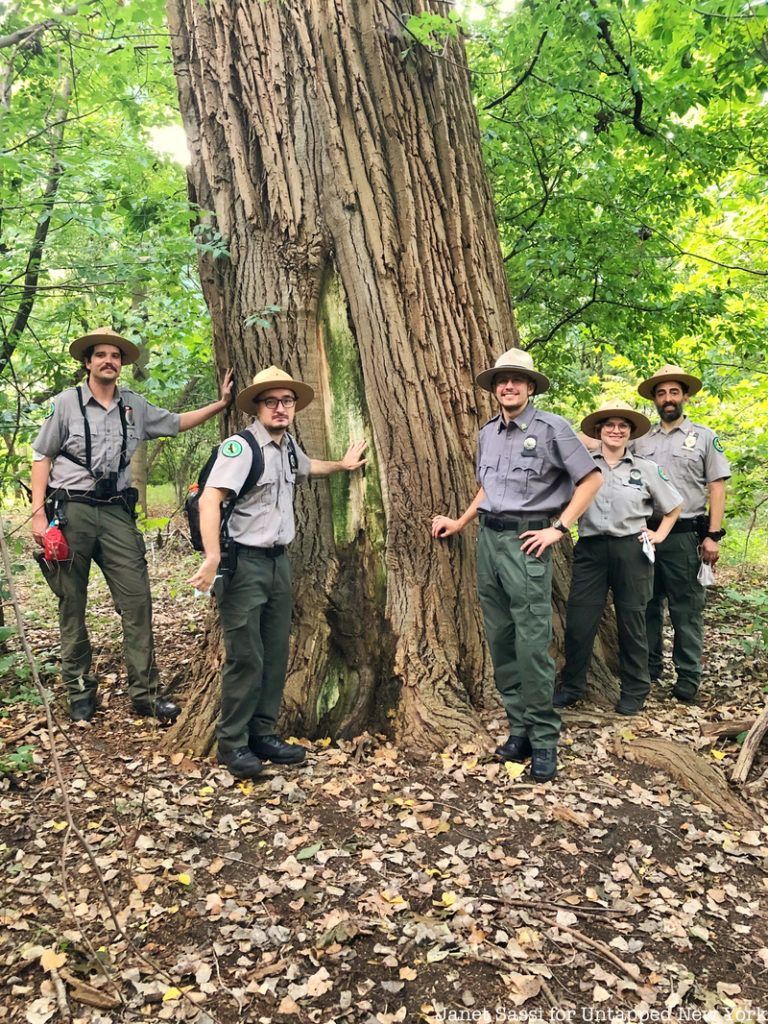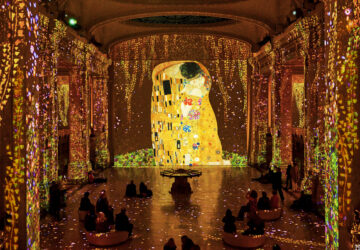6. The three Cottonwoods

The deep furrows of the Eastern Cottonwood bark make good hiding places for insects and snakes, one of which was slithering down the side as we visited. A trio of Cottonwoods lines one of the forest paths, growing in an area that was once thought to be a clearing. The first in line, the biggest of the three, abuts a sunny section of forest. As the trees only grow in full sunlight and exposed soil, says Tainow, it is likely that it was planted on an estate back in the mid- or late-1800s, when a few wealthy landowners resided in parts of the forest.
“You typically see this tree as a standalone in a field, so it could have been on somebody’s lawn,” he says. Today there is no sign of a former estate, largely because Robert Moses worked to restore the forest to a natural state during the depression, says Baisley. At that time, the Civilian Conservation Corp. removed a lot of the ruins, which allowed natural growth to return.
Coordinates: 40°52’25.2″N 73°55’36.0″W





